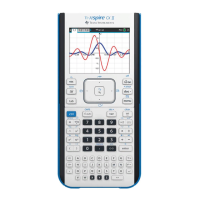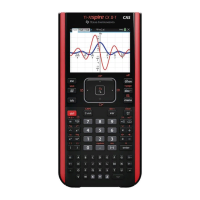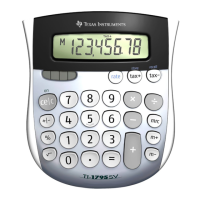236 EOS™ (Equation Operating System) Hierarchy
EOS™ (Equation Operating System) Hierarchy
This section describes the Equation Operating System (EOS™) that is used by the
TI-Nspire™CAS math and science learning technology. Numbers, variables, and
functions are entered in a simple, straightforward sequence. EOS™ software evaluates
expressions and equations using parenthetical grouping and according to the priorities
described below.
Order of Evaluation
Level Operator
1 Parentheses (), brackets [], braces {}
2 Indirection (#)
3 Function calls
4 Post operators: degrees-minutes-seconds (°,',"), factorial (!), percentage
(%), radian (
r
), subscript ([]), transpose (
T
)
5 Exponentiation, power operator (^)
6 Negation (⁻)
7 String concatenation (&)
8 Multiplication (•), division (/)
9 Addition (+), subtraction (-)
10 Equality relations: equal (=), not equal (≠ or /=),
less than (<), less than or equal (≤ or <=), greater than (>), greater than or
equal (≥or>=)
11 Logical not
12 Logical and
13 Logical or
14 xor, nor, nand
15 Logical implication (⇒ )
16 Logical double implication, XNOR (⇔ )
17 Constraint operator (“|”)
18 Store (→)
Parentheses, Brackets, and Braces
All calculations inside a pair of parentheses, brackets, or braces are evaluated first. For
example, in the expression 4(1+2), EOS™ software first evaluates the portion of the
expression inside the parentheses, 1+2, and then multiplies the result, 3, by 4.

